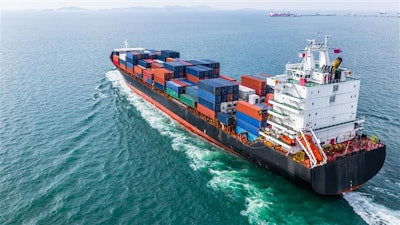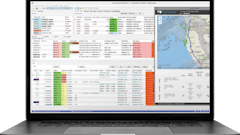
When it comes to supply chain management, the industry would be forgiven for wanting to forget that the last two years even existed. The Coronavirus disease (COVID-19) pandemic slammed into the industry raising all sorts of challenges for supply chain management.
Reflecting on what’s changed in the last two years, businesses have had to contend with a highly volatile environment that keeps presenting a number of challenges. These range from regulatory changes to material shortages to difficulties in demand forecasting to port congestion and even down to changing consumer behaviour and attitudes. To top it all off, digital transformation is coming on fast and furiously.
Today, trying to stay on top of supply chain management is incredibly hard work, and companies all over the world are struggling to find any sort of consistency. As we close off 2021, it might still feel very much like the future is all doom and gloom, but if there’s anything COVID-19 has taught us, it’s that while we can’t control our environment and situations, we can control how to respond to them.
In that light, here are five predictions for the supply chain in 2022, and how you can better prepare for the coming year.
- Supply chain chaos will continue into 2023, impacting financial performance and stability across industries.
The faster businesses accept this, the better they can arm themselves with the right weapons to deal with what’s coming. The truth is: it’s not back to business as usual. In fact, businesses will have to operate in a New Normal, and that New Normal might look somewhat chaotic. However, one of the best ways to protect your business is to stay informed. This is how platforms are helping businesses to filter out all the noise. By staying one step ahead of the information curve, you will have the advantage to react quickly to any situation.
Secondly, be prepared for new shopping holidays as more events like Black Friday will carry on to early 2022. This is par for the course with growing backlogs around the world. Companies will be rolling out more shopping holidays like Cyber Mondays and Tuesdays as a way to relieve stock.
- There will be an increase in brand consolidation or diversification.
At the end of the day, the decision to consolidate or diversify all boils down to business objectives. Now might be the time to assess if your company needs to pull out of a geography or concentrate more on specific zones for shipping efficiencies. Of course, this is critical and driven by cost efficiencies. On the flip side, it could be figuring out how to diversify and expand networks to include the best products and the right consumers to ship to and to go nearer to shore. Regardless, it’s all about getting alignment and meeting the right matrix. Using the right tools to mine your data means that you can get more accurate assessments and make better business decisions to get you through another rocky year.
- “Freight-fright” will keep the supply chain on its toes.
Freight fright sounds frightening, but really it doesn’t have to be. With the cost of freight soaring to new heights, it’s easy to lose sight that there can be solutions in the last-mile of the delivery chain. So, what we can expect to see in the New Year is that freight fright will incentivise companies to innovate and look at where they might be able to drop ship and look at alternative options. Perhaps smaller orders, getting the right consumer at the right time and at the right location. That’s the real opportunity for innovation.
- The demand for digital solutions will increase as companies rapidly adopt cloud-based technologies to drive decision-making across the supply chain.
As supply chain disruption continues, countries are increasing regulation in a way that demands transparency in the upstream supply chain. This means more monitoring in areas such as environmental social governance (ESG), pollution and diversity in production to prevent unfair practices. As a result, there will be greater demand for transparency in the supply chain, and this is where digital solutions can help. Too many companies today understand the need for transparency and are doing this process manually using spreadsheets. This method is inconsistent, time consuming and riddled with human error. Digital solutions can solve all these problems and enable more customer centricity.
- Greening the supply chain.
Climate change is now top of the agenda globally. Companies are held to a higher standard and younger consumers today expect companies to play their part. They’re more willing to vote with their feet and their wallets. This is why consumer perception counts. If companies can’t make good on their promises, they will be punished, and all it takes is one piece of negative news to tarnish the brand, so demonstrating your role in greening the supply chain is key. The good news is there are solutions in place to do just this.
What you need to do today to prepare for tomorrow
While it seems like the outlook for 2022 remains grim, it doesn’t have to be the case at all. Companies can better prepare themselves to face the challenges of the coming year by taking heed to some of our top recommendations.
- Invest in technology.
Your company needs to be resilient and agile in the supply chain in order to quickly respond to any unplanned events such as extreme weather or another wave of COVID-19. The truth is implementing technology into an existing ecosystem doesn’t have to be costly or lengthy, so companies shouldn’t be afraid to do this. The trick is actually finding the right kind of technology that adds value to your company to get the results you want.
- Embrace collaboration.
Companies need to have closer collaboration with supply chain partners to meet changing laws that help them become more resilient and agile. Finding the right partner isn’t always easy, but using the right match-making platforms can help in this endeavor.
- Measure what matters.
Picking the right KPIs for these wildcard changes is key. Depending on your business objectives, a combination of metrics is important at the early stages of solutions. The right analytics and insights can help companies get the most out of their data to bring out one source of truth. At the end of the day, you can’t manage what you can’t measure.


















